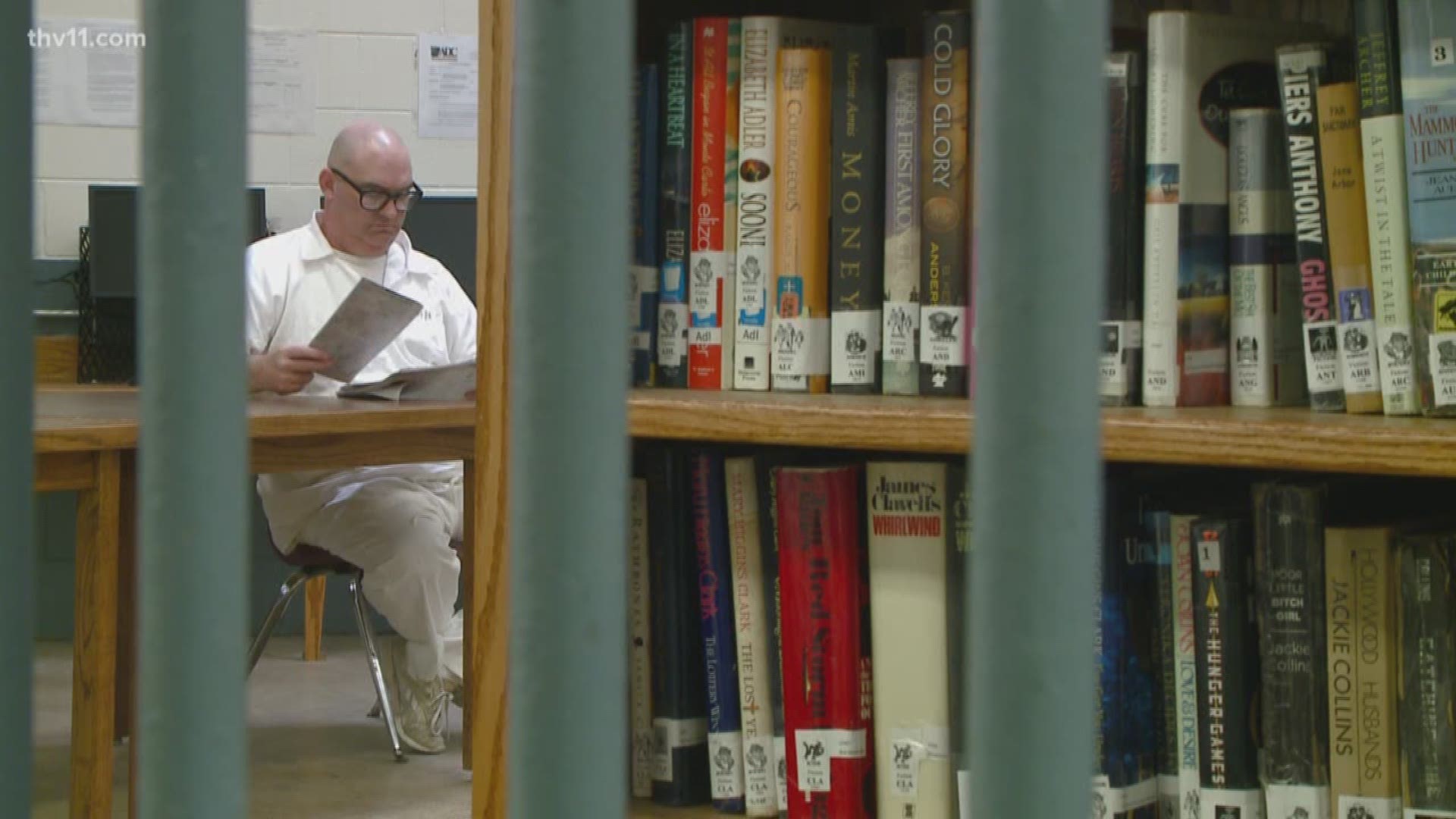PINE BLUFF, Ark. (KTHV) – There is something that you may not expect to see at many prisons. But in Arkansas, on a chilly spring day in Pine Bluff, there’s an inmate painting on the walls. He is totally unchecked.
There is a flag detail every morning and night, and inmates tend to a garden. How are they able to do that? Well, the Barbara Ester Unit is specifically for veterans.
"It is allowing each of us to let that honor return to us, and to bring us back to where we once were when we were proud of ourselves,” said Steve Sikanas, an Air Force veteran with a criminal past.
Solomon Graves, spokesperson for Arkansas Department of Correction said the garden is something that gives the inmates a sense of physical beauty, and the inmates that pride in that. “Seeing that flower grow grows something inside of them,” he said.
Inmate Sikanas said the unit is groundbreaking. Before finding himself at the Arkansas Department of Correction, he had combat experience in Vietnam. "I guess the easiest way to say it is, veterans are wired differently. That's not a good thing or a bad thing. It is just the truth," said Sikanas.
Three years ago, the Department realized that despite the plethora of programs available to their inmates, there weren't any designed for veterans. "None of those were actually compatible with the types of problems that we needed help for. Because we didn't realize we had a problem,” Sikanas explained to THV11.
Rehabilitation is the goal, not just incarceration. That is the idea behind the ADC's Veteran's Outreach program housed at the Barbara Ester Unit.
"When I got in this field, one of my mentors used to talk about 'stinking thinking syndrome,’” recalled Graves. “At its root cause, a lot of the behaviors that they are incarcerated for have been the result of stinking thinking. They made a bad decision at the wrong time that hurt themselves and potentially hurt someone else. In everything we do, we are really trying to change that thought process and put them in a position that if you're in a similar situation, you're going to respond differently because we gave you these tools."
Vietnam veteran Walter McCollough served in the U.S. Army. McCollough said he came home from the military with a chip on his shoulder. Both McCollough and Sikanas said when first approached, they didn't want to be transferred to the veterans barracks. Like so many other veterans, they didn’t want special treatment. "Veterans are set in their ways and I'm set in my ways. I said, that sounds like trouble," said McCollough. But that mindset quickly changed. "I find myself now really wholeheartedly into the program and benefitting from it,” McCollough said with a smile. Sikanas echoed, “In all my years of incarceration, I've never seen a program that has affected me the way this one has.”
The Department of Justice said veterans make up about eight percent of prison populations, but only a handful of states have similar facilities like Ester. In Arkansas, there are around 1,300 incarcerated veterans. The veterans barracks can only hold around 50 inmates which leaves a massive waiting list.
"What we are doing here at Ester works,” Graves said. "Antidotally, the staff that has been involved, the inmates that have been involved, have nothing but positive things to say about it.”
In prisons, success is measured by those who are able to get out and stay out. But, because Ester’s program is so new, they're just now able to start calculating the recidivism success rate. The ADC is also buying in with plans to expand the veterans program to other facilities. In the Ester barracks, sketches line the walls. There is one sketch for each branch of service. They’re in the process of being painted into permanence by the veteran inmates. It’s a comradery that is unique to the Ester Unit. Graves said that’s not the only thing unique to the unit.
"A lot of the behavioral challenges we have to deal with at some of our other correctional facilities, they don't have that here,” he said.
Just like with the military, when these men find themselves in the Veterans Outreach Program, there's structure, order, and rank. But there's also a sense of duty.
"It has brought back to us the feelings of when we enlisted. The feelings of when we were serving. The feelings of going back to that sense of duty. That sense of right and wrong. That sense of comradery,” Sikanas explained to THV11. These inmates are holding each other up while holding each other accountable. "If you're in the military you have the saying, 'you fight for the guy next to you.' It's the same in here. We're trying to save the guy next to us. We're trying to help the guy next to us. We want that guy to get out and be productive. We want that guy to make it the same way we want to make it,” said Sikanas.
They paint the sketches while restoring their honor and restoring themselves.

